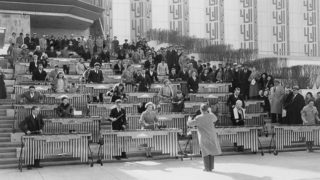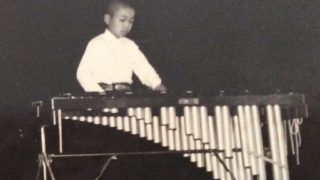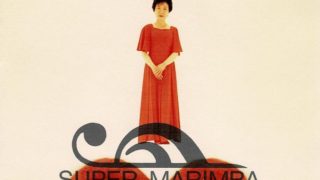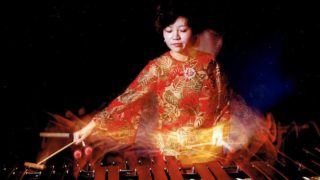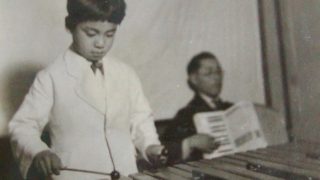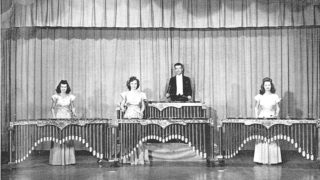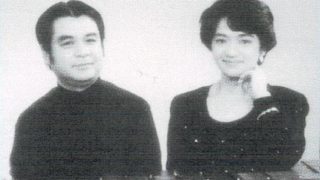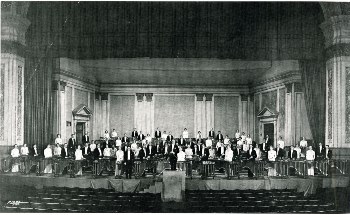American xylophone players in the 1930s
Vertical xylophone of Europe and Russia until the first half of the 20th century
Camille Saint-Saëns / Danse Macabre(1874)
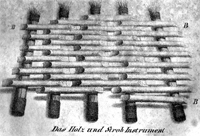
This is the first work of Xylophone in an orchestra. The instrument at that time was a vertical xylophone, and it was called the “straw fiddle”.
Danse macabre op.40
Orchestra and Xylophone
Igor Stravinsky / The Firebird, Ballet (1910) 、 Petrouchka
(1911) 、 Petrouchka (1947)
Sergei Prokofiev / Scythian Suite
(1915)
BélaBartók / The Wooden Prince (1917),
Musique Pour Cordes, Percussion Et Celesta (1936)
Dimitri Kabalevsky / The Comedians, Suite (1939)
Aram Khachaturian / “Sabre Dance” from ballet Gayane (1942)
Benjamin Britten / The Young Person’s Guide to the Orchestra 青少年のための管弦楽入門(1945)
Olivier Messiaen / Oiseaux Exotiques (1955)
Pierre Boulez
Karheinz Stockhausen
Clair Omar Musser [Marimba Orchestra and 100 players]1930s~1950s
Musser Marimba Orchestra Project
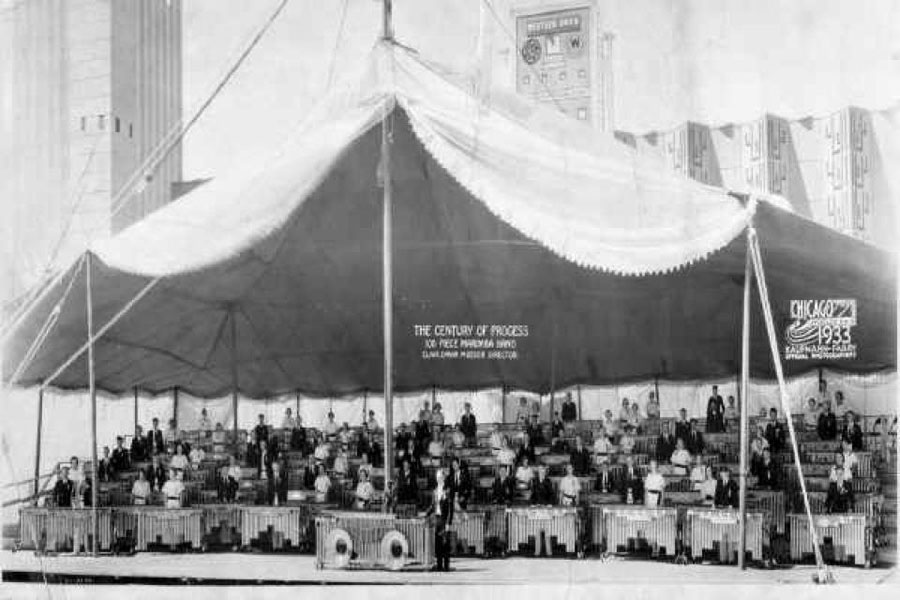
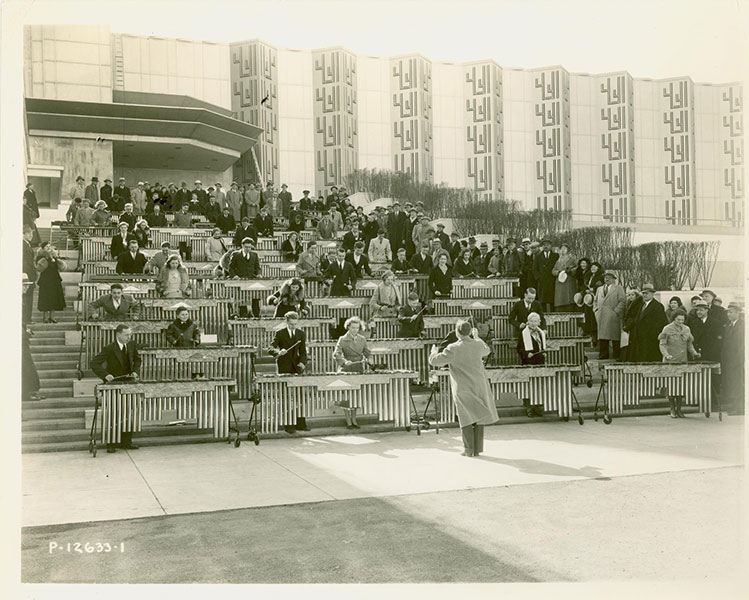
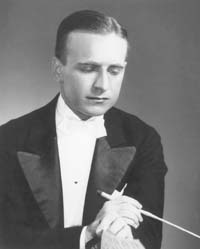

Clair Omar Musser [Etude]
Japan’s Xylophone / Marimba Roots of Development Yoichi Hiraoka
Hiraoka passed an audition of NBC in 1930, and for the next 11 years his xylophone music was heard every day throughout the United States. After nearly 4,000 days with NBC, the Second World War resulted in Hiraoka’s resignation from NBC. 1936,1937 He gave recitals in New York City and received high praises from New York Times.[citation needed] He also entrusted many records and works, and left many achievements.
After returning to Japan, he became a national hero and began making daily appearances at recitals and on radio programs, building up the popularity of xylophone playing in Japan.
Hiraoka later moved to the United States in 1963 and eventually obtained American citizenship.
In 1978, Hiraoka was awarded Japan’s Order of the Sacred Treasure, 4th Class (Gold Rays with Rosette).
Hiraoka Yoichi’s New York Times Review of Three Recitals in New York
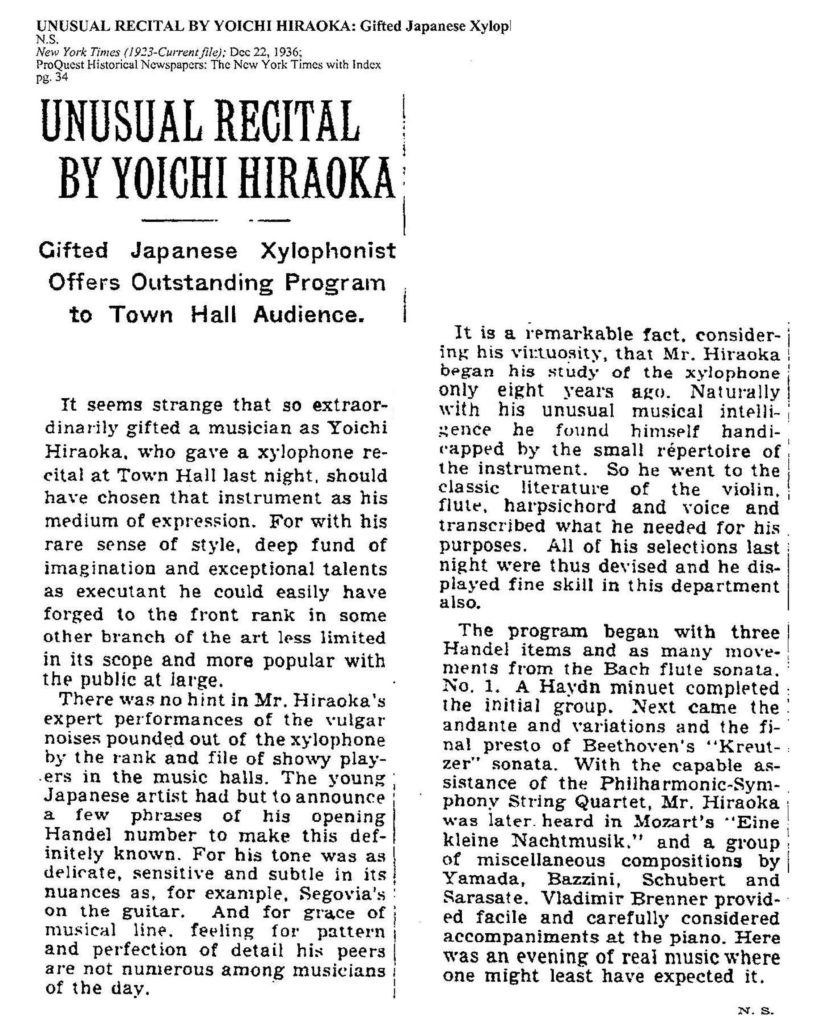
- Three handel works
- Bach / flute sonata first
- Haydn / Menuet
- Beethoven / Variations from Andy from Kreutzer Sonata, Presto
- Mozart / Eine kleine Nachtmusik
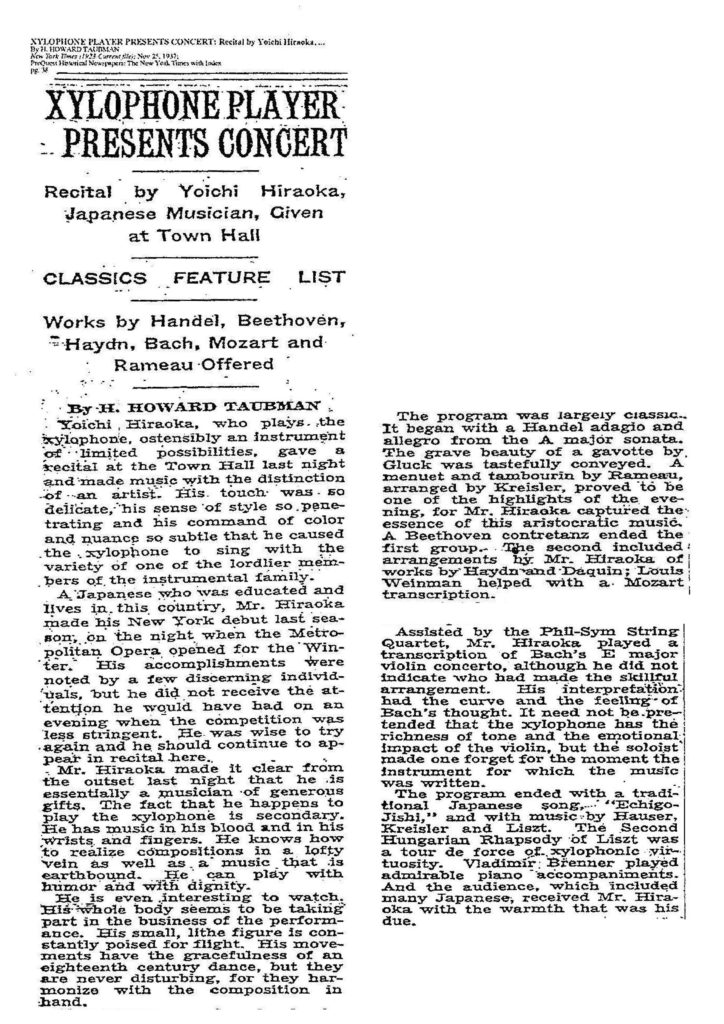
- Adagio and Allegro from Handel / Sonathai major
- Gluck / Gavotte
Rameau / Menuuet and Tambour (Krysler Arranged) - Beethoven / Contance Dance
- Haydn
- Dakan
- Mozart
Bach / Violin Concerto in E major - Japanese Ancient Tomb / Echigo Ayako
- List / Hungaria Rhapsody No. 2
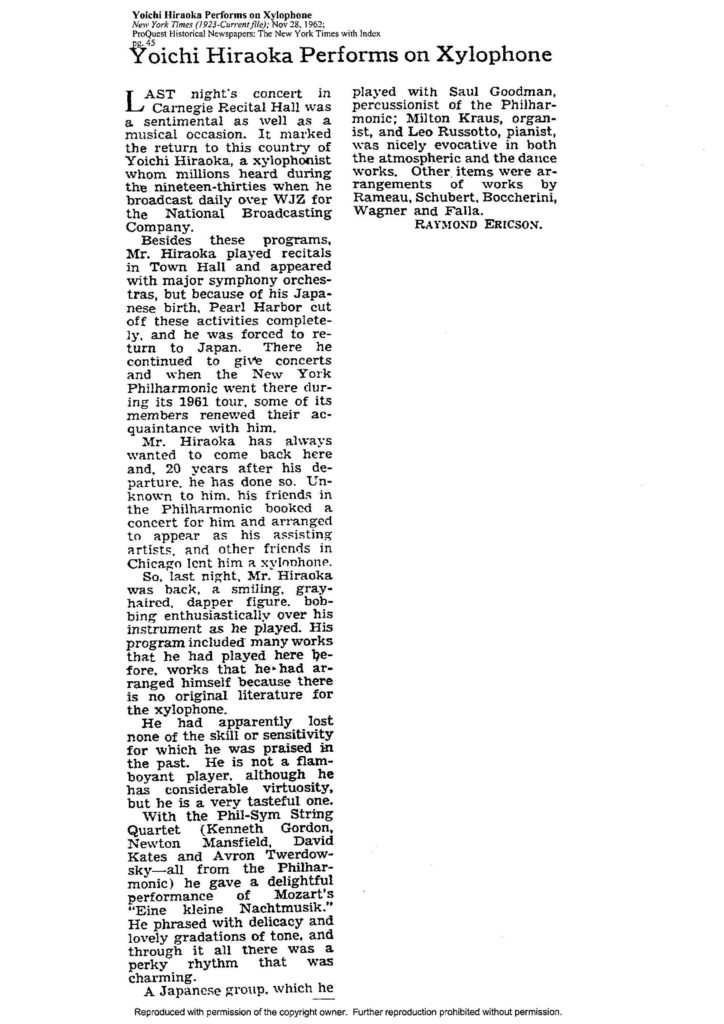
[Carnegie Hall] Recital
- Mozart/ Eine kleine Nachtmusik
- Japan Ancient Tombs / Oedo Nihonbashi,
- Kappore, Mt. Heijo, Wakasan of Yamadera, Debune
- Rameau
Schubert - Bockelini
- Wagner
- Falla
Hiraoka Yoichi’s Xylophone songs and “Preface” published in the 1930s
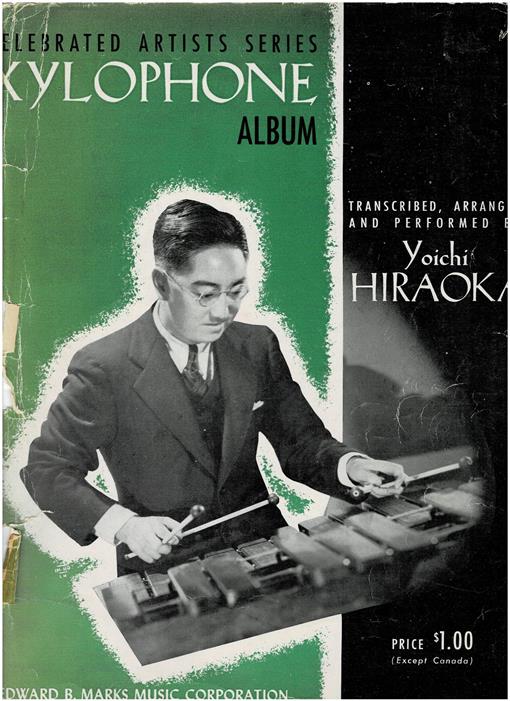
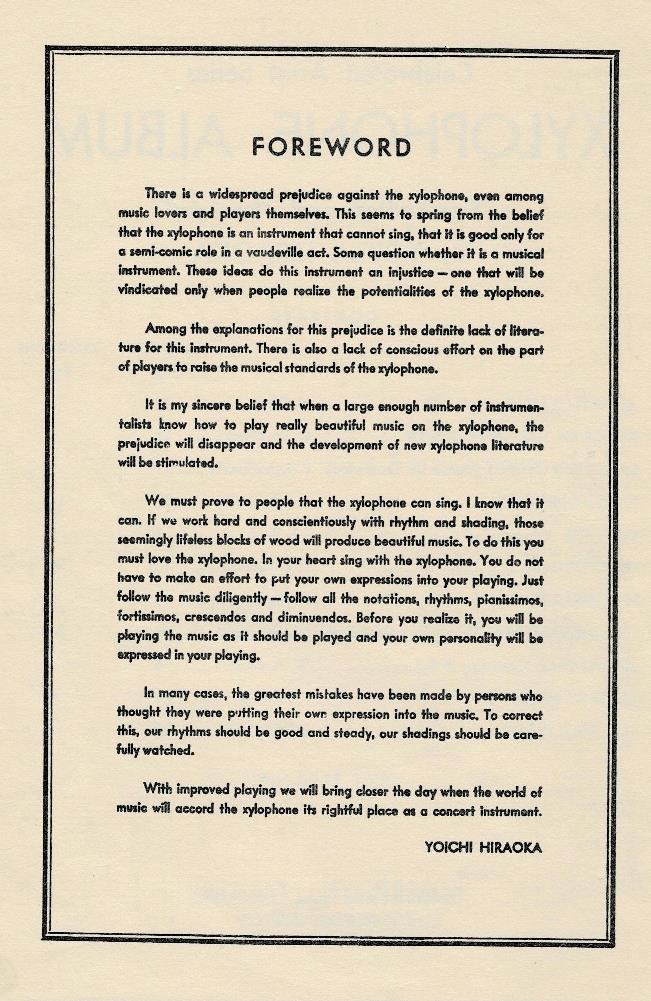
1940 Paul Creston / Concertino for Marimba and Orchestra( Female conductor Frederique Petrides commissioned )
Programme NotePaul Creston Concertino for Marimba (1940)Composer Note:
This work, which was commissioned by Frederique Petrides, conductor of the Orchestrette Classique, and dedicated to her, was completed in March, 1940. It is in three movements and is designed to demonstrate the capabilities of the marimba as a solo instrument with orchestral accompaniment.
The first movement, marked “Vigorous”, is based on two main themes, a strongly rhythmic one and a lyric one, both of which are announced in the orchestral introduction. The development of these themes occurs mainly in the solo part, and within the 3/4 meter are incorporated various rhythmic patterns.
The second movement, marked “Calm”, consists of an introductory theme first presented by solo flute, immediately followed by the main theme (in chordal structure) played by the marimba with four mallets. The general mood of tranquility is retained throughout, except for a minor climax developed toward the middle of the movement.
The last movement, marked ”Lively”, is a combination scherzo and finale, in 6/8 time. Rhythmic variety is the chief objective of this movement, the lyric and dramatic elements are interspersed throughout. (Paul Creston )
There are no isolated cadenzas to reveal the virtuosity of the soloist, as the composition as a whole affords numerous opportunities to display this phase.
1950 Marimba was brought to Japan by Lacour Musical Evangelistic
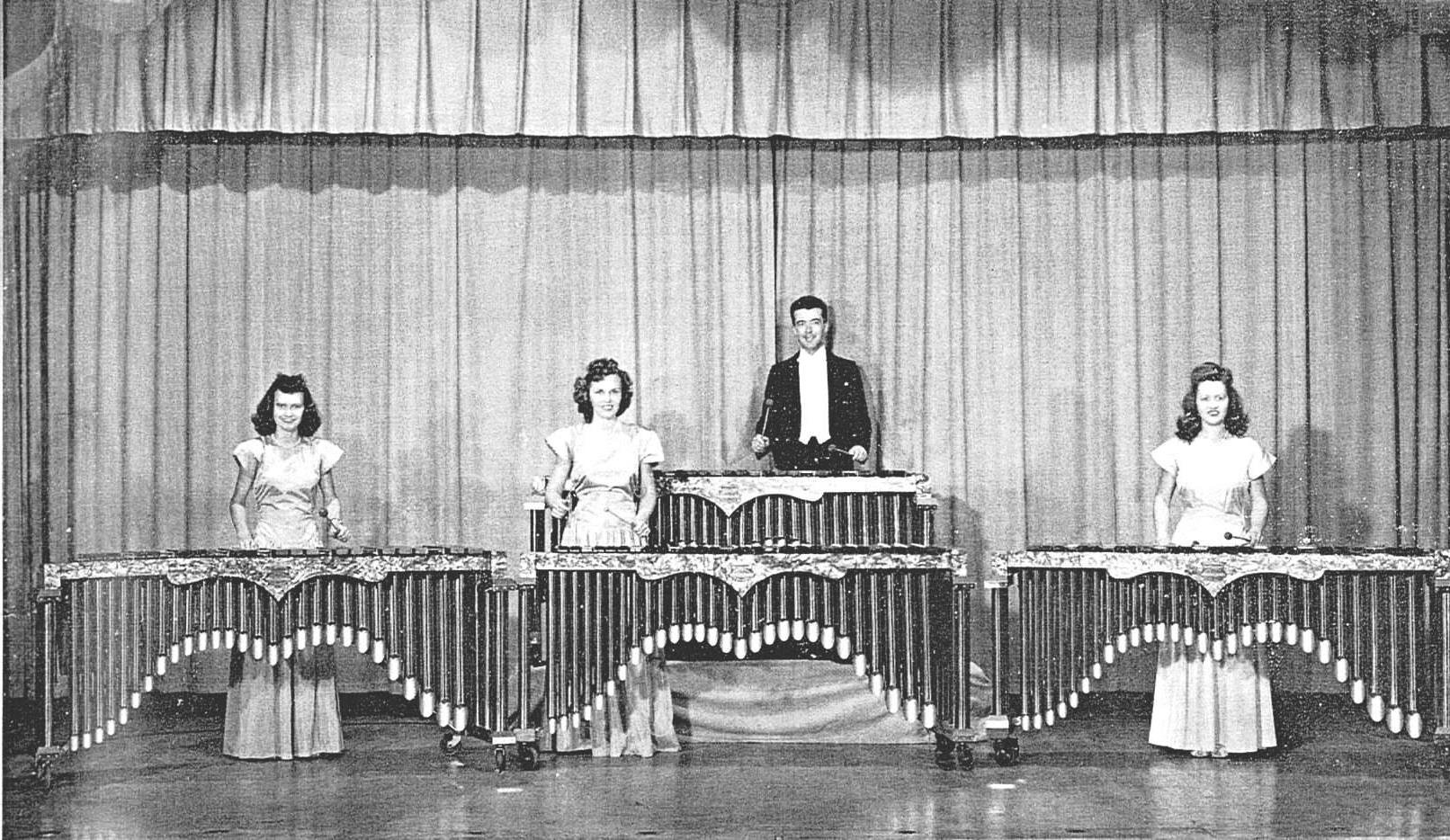
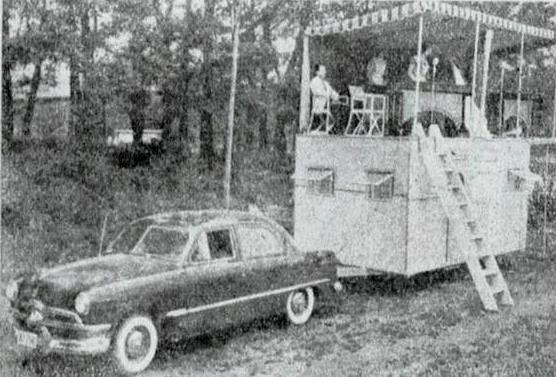
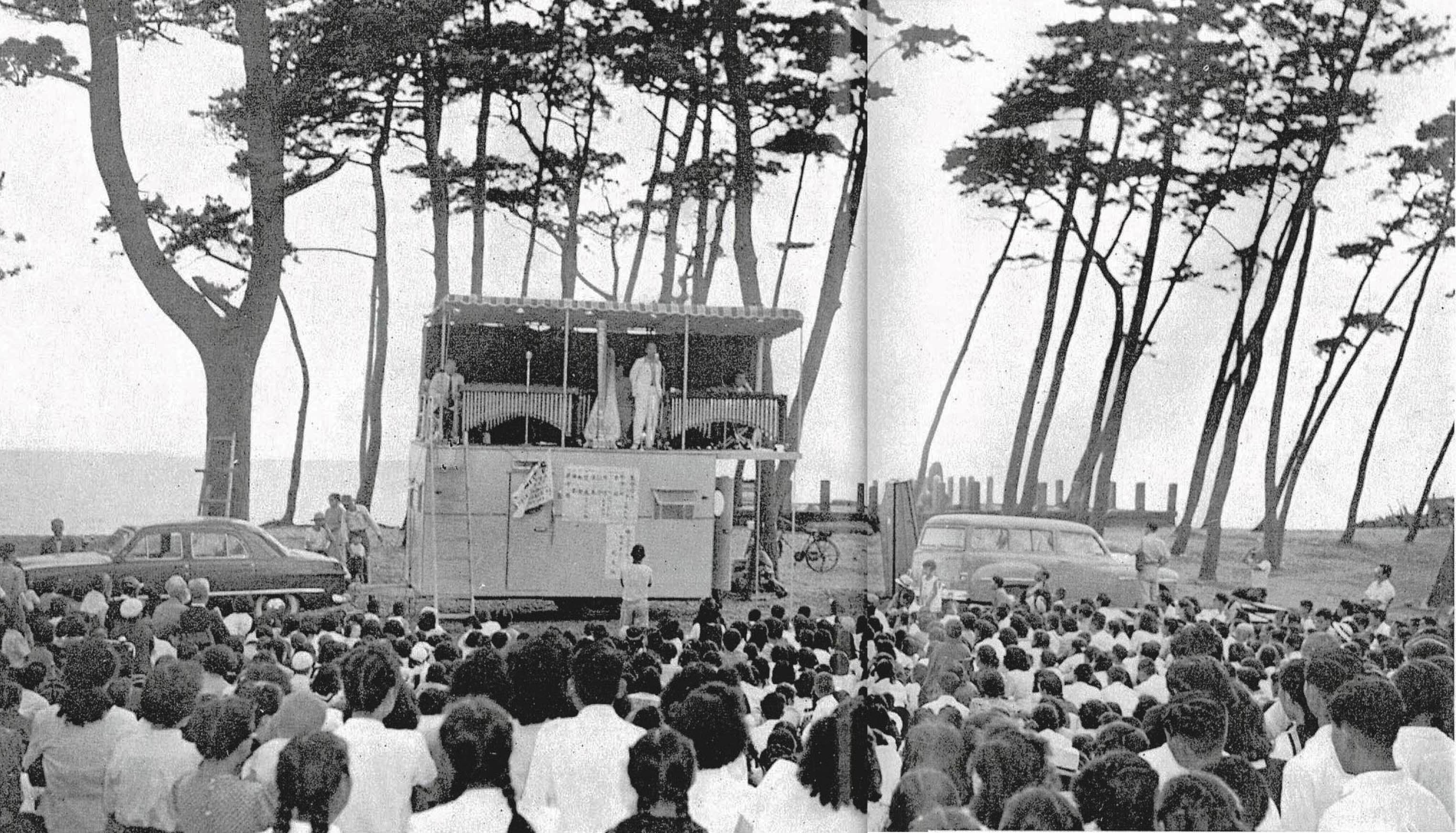

Robert Kurka / Concerto for Marimba and Orchestra, Op. 34 (1957)
Robert Kurka (1921-1957) was an American composer who also studied with Darius Milhaud. He died young for leukemia. The concerto was performed on November 11, 1959, two years after his death, by Richard Marn, conductor Marin Bist Vida Chenoweth.
Tatsuo Sasaki Performance of the San Diego Symphony Orchestra→
Library ページ
1964 Leo Rossotto /Concertino Classico for Xylophone
平岡養一氏の 伴奏者であった Leo Rossottoによる古典協奏曲。
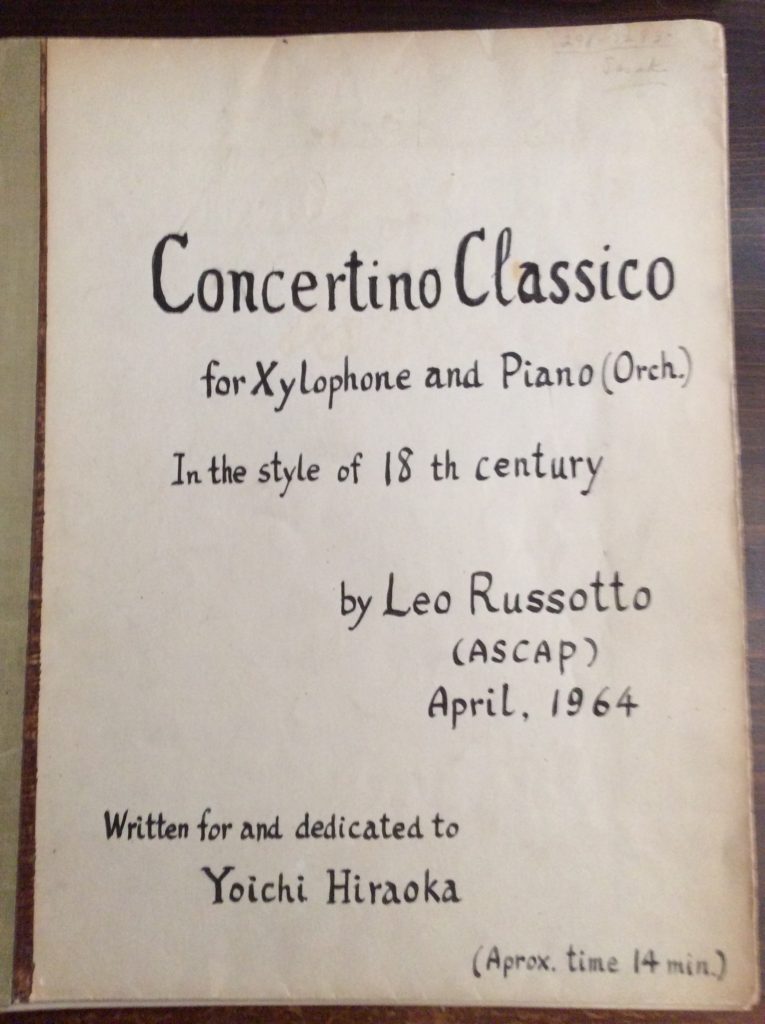
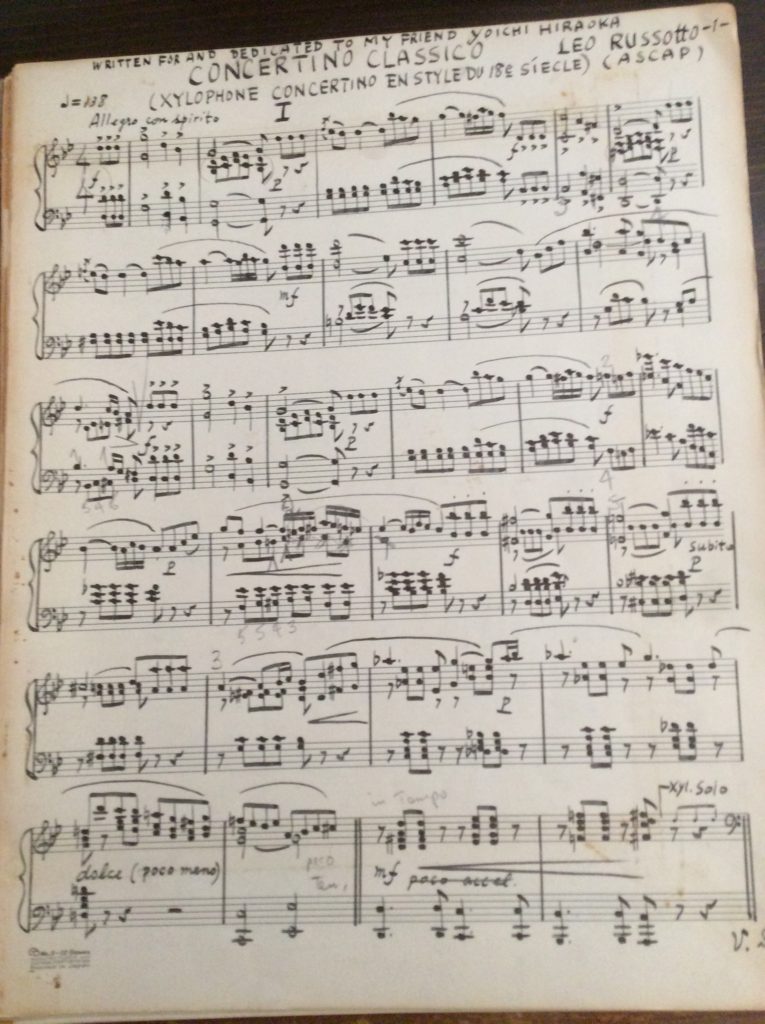
* Piano reduction version Please write to the information page if you wish.
Alan Hovhaness / Fantasy on Japanese Woodprints, Op. 211 (1965)
Alan Hovanes studied Gagaku , Nagasu and Joruri (Shamishen) in Japan from 1962 to 1963 and with the Kiso that adopted Japanese music style
Xylophone Soloist – Yoichi Hiraoka
Marimba Original Works (1953~1977) for 4oct.Marimba
* Piano reduction version Please write to the information page if you wish.
1965 Hikaru Hayashi 林光/”Contrasfor 2 Marimba ”
Performance: Masao Yoshikawa & Michiko Noguchi
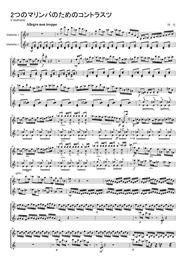
* Please write to the information page if you wish to score.
Two Movements for Marimba / mvt 1, by Toshimitsu Tanaka
Two Movements for Marimba / mvt 2, by Toshimitsu Tanaka
1973 Toshiya SUKEGAWA “5 Pieces after Paul KLEE”

